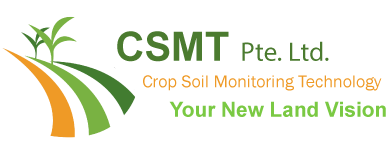
How do weather stations play an important role in precision forecasting?
This article covers the topic of why Agri Weather is important for your farming and other business which require precision weather forecasting.
The “Crop growth” is affected mainly by “Internal” and “External” factors. The internal factors are controlled by the genetics of the plants. While the lion’s share of the external factors which most affect crop growth consist of “Climatic” and “Edaphic (Soil)” factors. According to an estimate, nearly 50% of crop yield is attributed to the influence of “Climatic factors” only.

The climatic factors further consist of some sub-factors:

While the edaphic factors consist of:

In past, it has been a big challenge to have an accurate weather prediction for an agricultural farm. The destructive rains, floods, acute temperatures, and winds have caused widespread losses in agriculture. The weather predictions of the Metrological department have not been very accurate always. That is why the farmers have had to bear the losses ultimately.
Nowadays, the weather stations at a farm level are becoming an efficient tool to monitor the daily fluctuations in the weather. A variety of weather stations are available according to the number of parameters to be measured, work precision, and range. Some of the parameters that weather stations measure include:
- Rainfall
- Air and soil Temperature
- Relative humidity
- Soil moisture
- Wind velocity and direction
- Solar radiation
All of these weather components can be used for specific field operations such as irrigation scheduling, finding out the right time for fertilizer or spray application, and sowing and harvesting of the crop. The weather stations have helped to take precautionary measures against destructive rains, winds, severe high or low temperatures, diseases, and pests.
The use of weather stations helps to cope with the frost and high temperatures in summer. The weather stations equipped with multiple disease and insect models and sensors, send an alert to mobile phones before the occurrence of a disease or pest attack. Modern weather stations can be equipped with a variety of sensors and models (Insects and diseases) as much as someone wants.
 A complete Metos weather station
A complete Metos weather station
The weather stations along with Soil Moisture Sensors have helped to monitor the soil moisture, temperature, and pH (percentage of hydroxyl ions) of the soil. This will ultimately be helpful to define the right time for the sowing of a crop by knowing the temperature and moisture of the soil. This is especially important for sowing in rainfed areas where soil moisture and rainfall are critical factors.
The use of weather stations and moisture sensors would also help to apply the right amount of water and the right time of fertilizer application to the plants.
 Metos Soil Moisture Sensor (Moisture+EC+Soil temperature)
Metos Soil Moisture Sensor (Moisture+EC+Soil temperature)
If the two uncontrolled factors (climatic and edaphic) are monitored properly then this may help to decrease the role of the environment in reducing the yield. The weather stations have made life easier. The farmer does not need to go to the field and observe the water requirement or to see the insect and disease attack. But, instead, the weather stations send alerts to farmers’ mobile phones.
Nowadays when there is a lot of discussion about climate change. The weather station is no less than a blessing to cope with uncertain weather in changing climate.
Why Use Weather Stations?
- A good weather station can be helpful to properly plan farm operations.
- It can help to define the right time for sowing and harvesting by forecasting the soil and air moisture, temperature, and rainfall.
- It can be helpful in the following farm operations:
- When to irrigate the crop and how much to irrigate?
- When to apply fertilizer?
- When to spray?
- It also helps to take measures against frost.
- It can help to decide the time of transportation and storage of food grains.
- It helps in the management of cultural operations like plowing, harrowing and hoeing, etc.
- It may help to define the right time of land preparation for sowing a crop.
- It may forecast the onset of disease and insect attack through insect and disease models.
- It helps to take measures to protect livestock against rain and hail.
